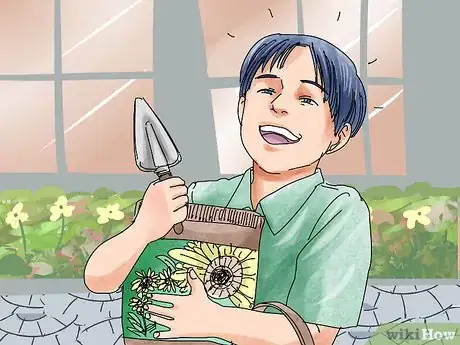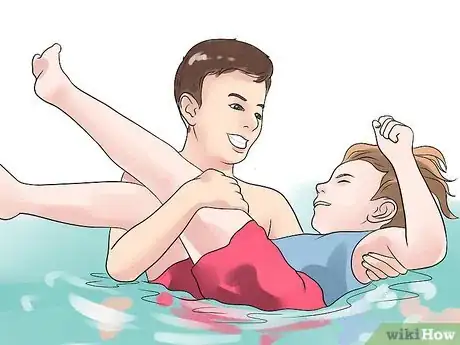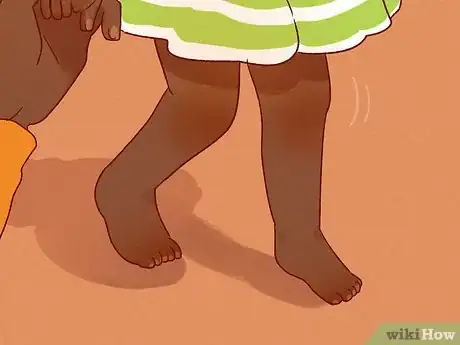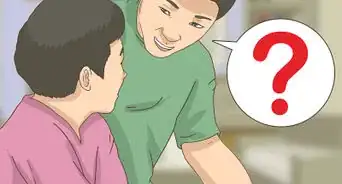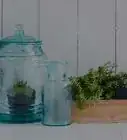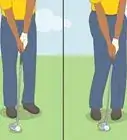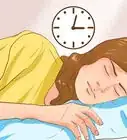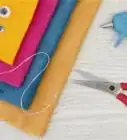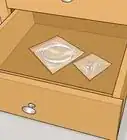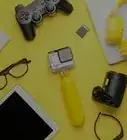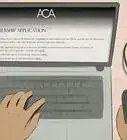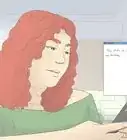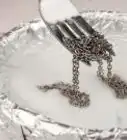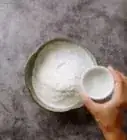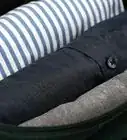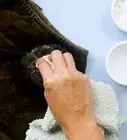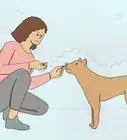wikiHow is a “wiki,” similar to Wikipedia, which means that many of our articles are co-written by multiple authors. To create this article, 36 people, some anonymous, worked to edit and improve it over time.
There are 13 references cited in this article, which can be found at the bottom of the page.
This article has been viewed 30,091 times.
Learn more...
Do you have difficulty keeping your kids in their footwear? Research shows you can actually be doing them a favor by letting them live barefoot! Also known as earthing, allowing children to live an unshod life has been shown to have many health benefits. [1] Among them are natural foot development, properly aligned toes, improved gait and posture, and reduced occurrences of athletes foot. Children growing up habitually barefoot also display higher levels of spacial-temporal memory and coordination.[2]
In the Pediatric Journal's studies on foot health, it has been observed that individuals who habitually go barefoot have healthier feet than those accustomed to wearing shoes. This is especially true for young children, as the twenty-six bones in their feet are not yet formed and are easily misshapen by rigid, pointed shoes and tight socks. [3] By following these steps, you can transition your children smoothly to a completely barefoot lifestyle.
Steps
-
1Start encouraging the child to go barefoot at home as often as possible. Make the house a shoe-free zone; removing shoes and socks at the door should become standard routine. This has the added benefit of keeping floors clean.
-
2Let your kids play in the front and backyard without shoes. After about one week, they should be able to play around the neighborhood and visit their friends' houses barefoot without issue.
- It is easiest for children to become accustomed to going barefoot when they learn to walk. Unless they are going outside in excessively hot or cold weather, no footwear is needed. In this way, going barefoot will be part of their normal routine.
- Most children who have worn shoes will initially run striking the ground heel first due to being accustomed to wearing rigid, over-padded shoes which have a downward tilt towards the toe. A couple weeks of barefoot running will correct their gait and encourage them them to land properly on the forefoot and balls of the feet.
- For cleanliness, keeping a bucket of soap water and towel by the door is sufficient to keep your interior pristine. A package of disposable wet wipes by the door also makes for conveniently quick entries. You will find bare feet are supremely dirt-resistant, and track in far less outdoor debris than shoes!
Advertisement -
3Start taking them on excursions to barefoot friendly areas, such as the park and the beach.
- After three weeks, you can try taking them on family hikes. Many trails exist in Germany and Switzerland for the express purpose of hiking barefoot. Initially taking along a pair of thongs (sandals) in the backpack for them in case you run across rough terrain would be a prudent measure. Look for natural trails in forests and meadows, and avoid gravel roads.
-
4Venture into other areas after four weeks. At this stage your child's feet will be tough enough for optimal performance on most surfaces, and you can start taking them on excursions to the store and library. Contrary to many public conceptions, there are no legal health standards against letting customers go barefoot.
- Regardless of the "No shirt, No shoes, No service" signs, it has been observed that most people do not have a negative response to barefoot children. If it becomes an issue, carrying an extra pair of sandals for the first few weeks wouldn't be amiss.
- A pair of knitted leggings fitted over the ankles will help keep your kids toasty in winter.
-
5Enjoy going barefoot! If you home-school and/or live in a warm clean climate, it's safe to donate the remaining pairs of shoes and socks at the end of a month. June 1st is “National Barefoot Day”, and a great time for donating any remaining shoes to charity.
- Stopping at a grassy park with a donation bin is a great way to take the final step into a barefoot lifestyle. Tell your children to go around the house to collect all their shoes and socks, then wrap them in shopping bags before putting them in the car. They can wear their newest pair of shoes on the road, but once you arrive ask if they want to keep them. Make sure to tell your children after they donate their shoes, there is no way to retrieve them from the container.
- If they agree, seat them on top of the donation bin and remove their shoes. Ask if they want to keep their socks - if they prefer to keep them, you can carry the child back to the car wearing a pair.
- If they donate all their shoes and socks, reward them! Letting them play in the park barefoot afterward is a great incentive, as are games like “hungry wolf.” Studies show parents exhibiting dimorphous expression in play have stronger bonding relations with their children. [4]
-
6Check their feet before bedtime.
- A bubble bath followed by a foot inspection and massage after a day spent in barefoot play is useful to ensure a child’s feet are in good condition. It also relaxes and helps them to sleep afterwards.
- Playing "This Little Piggy", "Five Little Pumpkins" and "Hungry, Hungry Wolf" after a day of barefoot play will cause most children to anticipate their nightly checkup and encourage them to remain unshod. The transition to a full-time barefoot lifestyle should offer daily bonding benefits they can look forward to![5]
Community Q&A
-
QuestionHow can I encourage my kids to not wear plastic blink-light shoes my in-laws gave them? I‘d prefer they go barefoot and give up wearing shoes/socks voluntarily.
 Oliver OtterCommunity AnswerI would let them enjoy the lights for now. Once the newness wears off, you can associate certain games and experiences with going barefoot. Making a nightly routine, playing this little piggy, nibbling their toes and tickling them will encourage most kids to prefer remaining barefoot.
Oliver OtterCommunity AnswerI would let them enjoy the lights for now. Once the newness wears off, you can associate certain games and experiences with going barefoot. Making a nightly routine, playing this little piggy, nibbling their toes and tickling them will encourage most kids to prefer remaining barefoot. -
QuestionIs it safe for children to go barefoot in public washrooms at places like gas stations?Many children go barefoot to public bathrooms at the beach, and it won't be much different going barefoot in a gas station. The only concern would be if they have a cut, in which case they should avoid unclean surfaces. Children accustomed to going barefoot 24/7 have the same capabilities as a dog with healthy paws, so in most instances there's no need to be over-cautious.
-
QuestionWhat are the best minimalist shoes for winter?The best option for winter are knitted garters which fit above the ankles. These will enable your kids to maintain better circulation and feel the ground under their feet while still remaining toasty! If they absolutely must have shoes, try Manitobah Mukluks. These will keep your kids' feet warm, while their wide toe box maintains proper room for growth.
Warnings
- Don't donate the child's shoes and socks before they're ready.⧼thumbs_response⧽
- Avoid taking them on long hikes without footwear before their feet have developed sufficiently.⧼thumbs_response⧽
- If in the vicinity of broken glass or other sharp objects, put on light sandals or carry the child.⧼thumbs_response⧽
- Beware of hot or cold surfaces. Gauge the ground temperature before taking your child outdoors.⧼thumbs_response⧽
References
- ↑ https://www.frontiersin.org/articles/10.3389/fped.2018.00115/full
- ↑ https://digitalcommons.unf.edu/cgi/viewcontent.cgi?article=1586&context=etd
- ↑ https://www.ncbi.nlm.nih.gov/pmc/articles/PMC4937549/
- ↑ https://www.ncbi.nlm.nih.gov/pmc/articles/PMC6288201/
- ↑ https://www.ncbi.nlm.nih.gov/pmc/articles/PMC6288201/
- https://bmcgeriatr.biomedcentral.com/articles/10.1186/s12877-020-1486-3
- https://www.frontiersin.org/articles/10.3389/fped.2018.00115/full
- https://www.ncbi.nlm.nih.gov/pmc/articles/PMC5556098/
- https://pubmed.ncbi.nlm.nih.gov/29922637/

